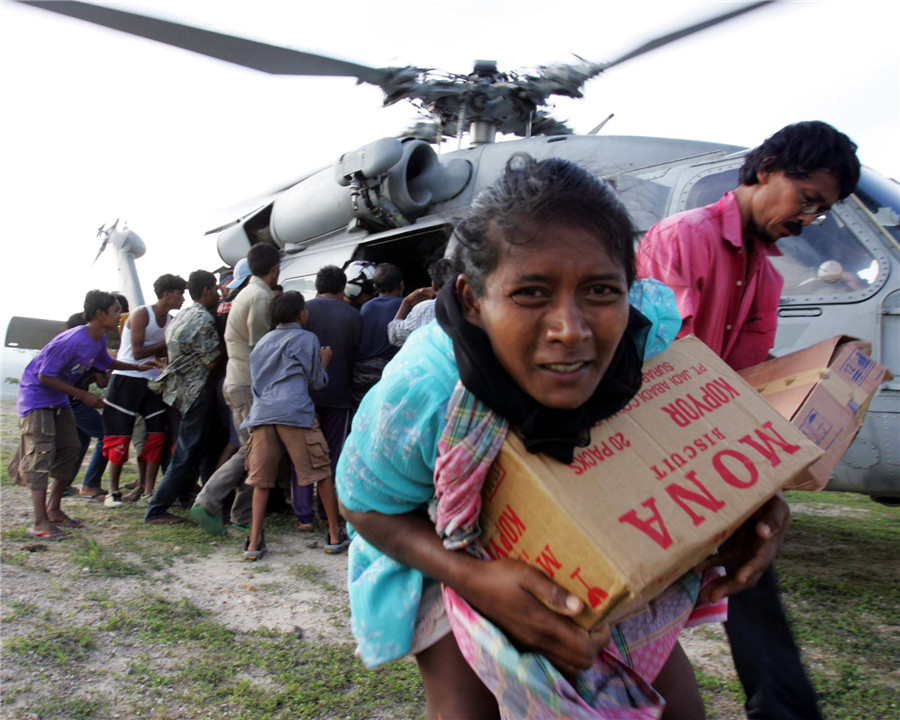 |
|
Tsunami refugees receive supplies distributed by the USS Abraham Lincoln Carrier Strike Group in Krueng Raya, some 15 miles northeast of Banda Aceh, Indonesia in this January 3, 2005 file photo. On December 26, 2004, a magnitude 9.15 quake off the coast of Indonesia's Aceh province triggered an Indian Ocean tsunami that killed around 226,000 people in Indonesia, Sri Lanka, India, Thailand and nine other countries. [Photo/Agencies] |
"THE LAST MILE"
A far bigger concern is getting warnings to at-risk coastal communities, and making sure people get to safety in time.
In some of the countries worst affected in 2004 - Thailand, Indonesia and India - much progress has been made, officials said. But concerns remain about this final, crucial stage.
The 2012 failure in Aceh prompted a reassessment in Thailand, where 5,395 people died in 2004, said Somsak Khaosuwan, head of Thailand's National Disaster Warning Center.
"We put our systems to the test each day. Our warning system is one of the best in the world, but I must admit we lack maintenance," he said.
Samit Thammasarot, a former head of the agency who was ousted from his position following a 2006 coup against then Prime Minister Thaksin Shinawatra, was more damning.
"If a tsunami happened today, would we be prepared? No, we would not," Samit told Reuters.
"On an official level there has been, in the past, corruption and cut-price equipment bought that does not meet international standards."
In India, the new system struggles to communicate alerts by fax, text message and email to remote locations, said Ajay Kumar, an official at the Indian National Centre for Ocean Information Services.
"Some of the people, officials, are not getting the alert," he said.
"Secondly, one thing that has come out from the drills is that the last mile connectivity is still missing. If (a) tsunami is coming, even now people don't know what is to be done, where to move."